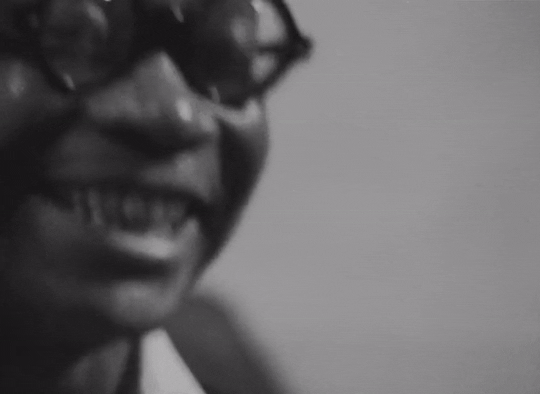
‘A major figure of the American avant garde, Shirley Brimberg Clarke (1919-1997) was born into privilege as the daughter of Polish-Jewish immigrants who made their fortune in manufacturing. Rebelling against a repressive bourgeois upbringing, Clarke turned first to dance, and later film and video, to express her distinctive vision of the world.
‘Moving freely across genres and media throughout her career (and often within a single work), Clarke’s cinema explores the porous boundaries between narrative and documentary filmmaking, and film and other media, such as painting, dance, performance and video. Her 1960s features The Connection (1961), The Cool World (1963) and Portrait of Jason (1967), for which she is arguably best remembered, address issues of urban alienation, poverty, addiction and racism, focusing on lives lived at the margins of American society. Fearless in both her personal and creative life, Clarke produced a body of work that is as formally innovative as it is rooted in social protest.
‘Clarke initially trained as a dancer, immersing herself in New York’s vibrant post-war avant-garde dance scene. Although her dance career never quite earned her the critical acclaim she’d hoped for, it had a lasting impact on her subsequent filmmaking and video work, informing an interest in how movement is recorded formally, while introducing her to key avant-garde dancers and choreographers.
Dance in the Sun (1953), Clarke’s first short film, captures the sinuous choreography of professional dancer Daniel Nagrin. Bounding off the stage and out of the cinematic frame, it quickly cuts to him dancing on the sand. By fluidly switching between the two locations, Clarke extends Nagrin’s choreography into a new – potentially fantasy – space. Much like her then more established contemporary, dancer and filmmaker Maya Deren, Clarke uses editing to conjure up an individual’s interior life: a memory, perhaps, of a long-ago dance under the sun.
‘Bullfight (1955) similarly cuts between different environments, editing on shared gestures to create a sense of continual motion and high drama. Flitting back and forth between Anna Sokolow’s bullfight-inspired choreography and actual footage of a fight in an arena, Clarke’s montage mirrors the elegant and precise movements of the dancer with those of the matador, creating a dramatic stand-off.
Other short films evoke a dance without dancers, using the rhythms of the edit and movement within the frame to capture the dynamism of urban life. Bridges-Go-Round (1958), a colourful experimental short on New York’s suspension bridges, uses overlapping footage (often moving in opposing directions) and pulsing zooms to animate otherwise static structures, creating moments of cinematic abstraction and a visual affinity with jazz.
‘Jazz is the pulsing vein snaking through much of Clarke’s work, right up to her final feature Ornette: Made in America (1985), a portrait of free jazz pioneer Ornette Coleman. Her first feature, The Connection, includes a group of real jazz musicians among the cast, adding a sense of spontaneous authenticity to the subterranean underworld being depicted.
‘Jazz in this context connotes a mood and a milieu, a hip stance by then inscribed into the Beat Generation mythos that Clarke’s film was consciously tapping into. Beyond using jazz for either soundtrack or subject matter, Clarke’s overall approach to making films shares certain qualities with the musical genre, emphasising improvised performance, changes in dramatic intensity, syncopated editing and – often in appearance only – an absence of script.
‘By the late 1950s, Clarke became increasingly occupied with documentary filmmaking. She worked with Willard Van Dyke, Richard Leacock and D.A. Pennebaker, among others, on a series of three-and-a-half-minute film loops for the 1958 Brussels World’s Fair. With Van Dyke, she also co-directed Skyscraper (1959), a documentary on the construction of the Tishman building on Fifth Avenue, and a young Frederick Wiseman produced The Cool World.
‘Critical of the premise that cinema could objectively document events, Clarke didn’t always see eye to eye with these filmmakers. As the film scholar Lauren Rabinovitz argues: “Clarke denied the possibility of any such intuitive objectivity by emphasising the inherent subjectivity in the cinematic process itself.”
‘The Connection employs cinéma vérité techniques within a narrative framework to expose their limitations as a means of accessing ‘truth’. Based on Jack Gelber’s contentious off-Broadway play, it follows a director making a film about a group of junkies waiting for their ‘connection’ to deliver a heroin fix. Intertitles claim the film has been constructed from found footage shot in an addict’s apartment by documentary filmmaker Jim Dunn, and handed over to cameraman J.J. Burden, who pieced together the film as “honestly” as possible.
‘Even during its moments of seeming spontaneity, it’s clear we’re watching a drama; Clarke would later complain that the cinematography was “too slick”. Nevertheless, The Connection’s over-stylised performances and theatrical approach to blocking actors contribute to undoing the illusion of realism. The desperate attempts of a white bourgeois filmmaker to capture ‘authentic’ Beat life while manipulating the action are also sent up. “I’m just trying to make an honest human document,” Dunn whines as he intently refocuses his camera. Clarke’s digs at the earnestness and duplicity of the male documentary filmmaker are delicious.
‘For her next feature, The Cool World, a docudrama about black street gangs, the cinematography was to be far less slick. The film follows teenage boy Duke as he struggles to escape his difficult situation by climbing the ranks of the Royal Pythons, a Harlem gang. The Cool World cleverly merges techniques drawn from narrative, documentary and experimental filmmaking: on-location shooting, mobile camerawork and non-professional actors emphasise cinematic realism, while the film’s kinetic montages of Harlem street life recall her formalist early films. Fêted for producing the first commercial film shot on location in Harlem, the crew largely avoided tripods, choosing to keep the cameras close to their characters as they chase the limited opportunities available to them.
‘Clarke adapted Warren Miller’s 1959 novel with her creative and romantic partner Carl Lee, who played Cowboy in The Connection. A Harlem native, Lee recruited young performers from the neighbourhood, and made sure the film’s portrayal of life on the streets was accurate. With its largely empathetic depiction of the contexts leading to urban crime, The Cool World has become a landmark of African-American cinema.
‘The dramatic tension in Portrait of Jason, Clarke’s study of black gay hustler Jason Holliday, rests on the shifting and imbalanced power relations between filmmaker and subject. Much like Andy Warhol with his film portraiture, particularly Chelsea Girls (1966), Clarke turns the camera on to the performance of personality. Shot in her Chelsea Hotel apartment in one boozy 12-hour session, the film records Jason’s extended monologue of outré anecdotes and musical skits.
‘Cracks soon start to emerge in the well-honed routine: he cries, falls exhausted on a bed and interacts wildly with an increasingly confrontational film crew. By the end of the film, the veracity of his story is put into question: “Be honest, motherfucker, stop that acting will you?” barks Lee off screen. Unable to pierce the mask of his personality, or to access the ‘truth’ of what happened between him and the crew, Portrait of Jason leaves several questions unanswered.
‘Jason’s moments of vulnerability also implicate us as viewers, unsure if we are complicit in the spectacle of his torment. Jason tells the camera that “people love to see you suffer”, and he might just be talking about us.
‘As a female director in a largely male-dominated industry, Clarke frequently spoke of how her identification with outcasts was informed by a feeling of not belonging in a man’s world. In Noël Burch and André S. Labarthe’s documentary portrait of the filmmaker for French television, Rome Is Burning (1970), Clarke observes: “The woman and the black American male have in common a psyche, and a problem, and a reality, and are the closest at being able to understand each other.” By this logic, then, the black woman experiences a double oppression, but the point is never raised, and the conversation moves on.
‘If Clarke’s identification with the black ‘Other’ feels like a difficult pill to swallow, we can see at least how the space she opens up for Jason to speak is a markedly political gesture. Jason’s chameleonic performance – at turns amusing and tragic, often in the same breath – unveils how mainstream American society has repeatedly marginalised him: for his blackness, for his queerness, for a lifestyle incompatible with its so-called values. Clarke saw Jason’s life as symbolic of the horrors white society had inflicted on African Americans, noting: “You can’t leave that film and not be aware of what has been done to him.”
‘Clarke’s characters may be the products of an unjust society that conspires to subject them, but they are rarely portrayed as pathetic victims or morally punished for their transgressions. Her concerted exploration of oppression – as it emerges from the intersections of class, race, sexuality and gender – feels more relevant than ever.’ — Sophia Satchell Baeza
____
Stills


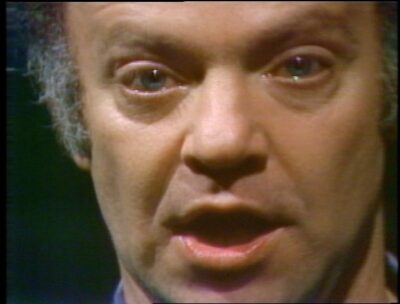
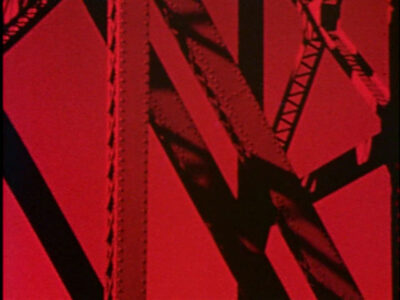
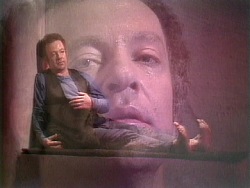




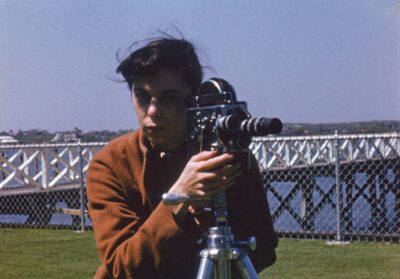
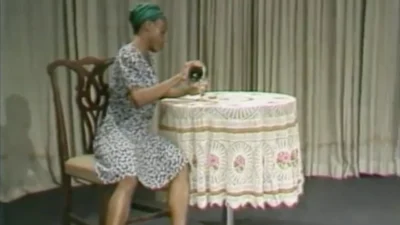


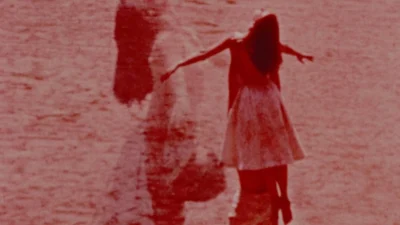

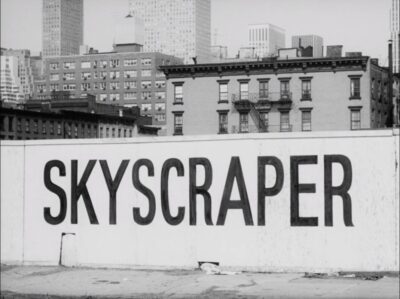


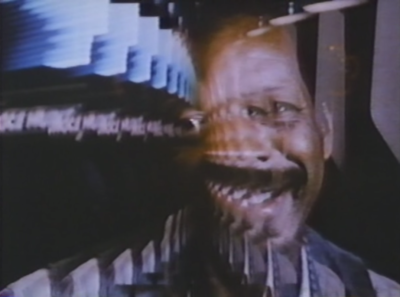
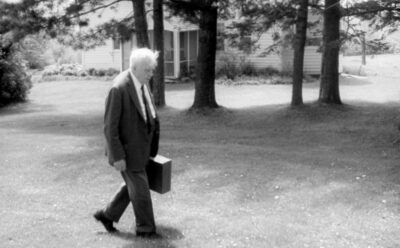
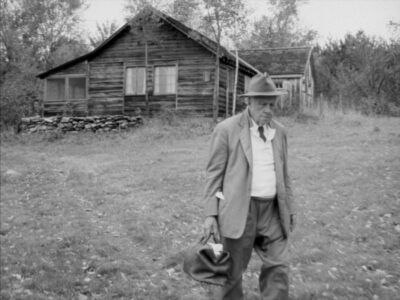
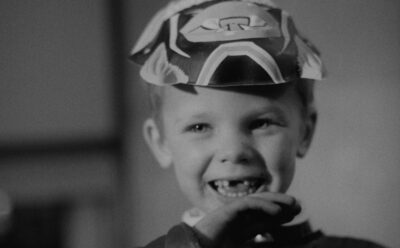
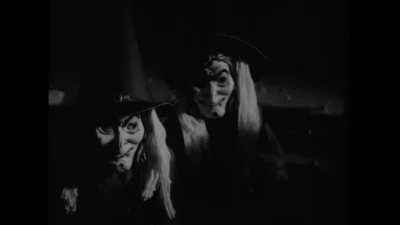
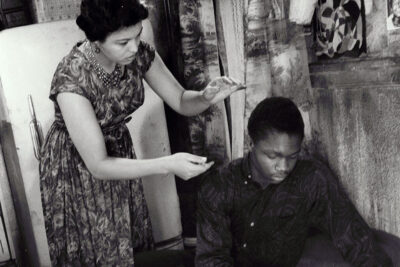

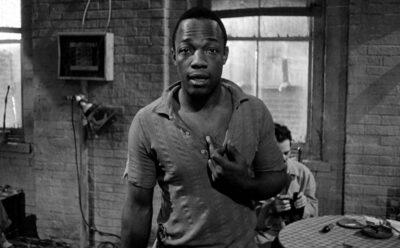

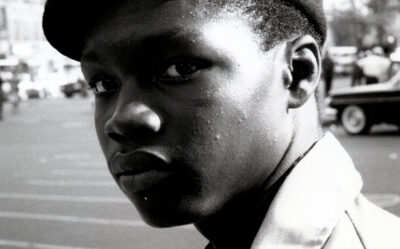

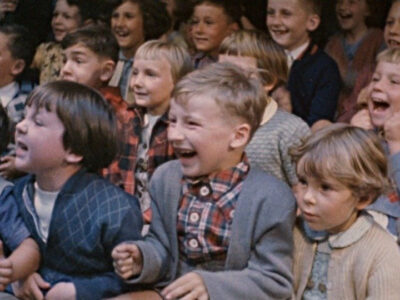
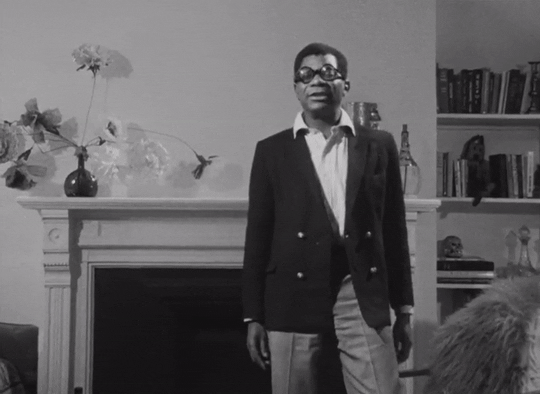


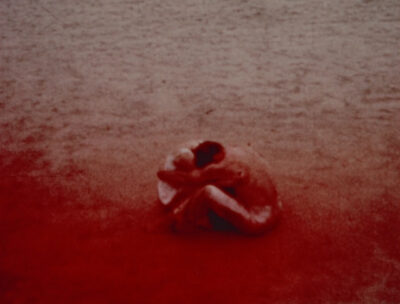



_____
Further
Project Shirley
Shirley Clarke @ IMDb
Shirley Clarke Saw the Future of Cinema
SC @ MUBI
SC @ The Film-makers Cooperative
A profile of Shirley Clarke
Celebrating Shirley Clarke
SC @ Letterboxd
DVD: ‘The Magic Box: The Films of Shirley Clarke, 1929–1987 ‘
Great Directors: Shirley Clarke
SHIRLEY CLARKE’S FILMS COLLECTED AND RESTORED
The Complicated Camera of Filmmaker Shirley Clarke
SHIRLEY CLARKE’S INDEFINITE TRUTHS
TO THE BEAT OF SHIRLEY CLARKE
AN INTERVIEW WITH SHIRLEY CLARKE
AN AVANT-GARDE’S AVANT GARDE: THE WORK OF SHIRLEY CLARKE
Experimental director Shirley Clarke on her film about drug addiction
_____
Extras
A Portrait of Shirley Clarke (1968)
Shirley Clarke: A Retrospective
Shirley Clarke on women in film and men in money
BRUSSELS LOOPS [1958] ► SHIRLEY CLARKE ► LIVE SCORE by MTS
______
Interview (1964)

How did you get your start in filmmaking?
My first film was a short dance film called Dance in the Sun. When I saw the first rushes I was horrified: it was just terrible. I debated on whether to finish it or not, but I finally decided to go ahead, because if I didn’t I would never learn anything. Still, most dance films are so terrible that mine was among the best, and it won a prize. This made me an authority on dance films. I then made two more dance films and a number of other short features: seven all together before I made The Connection. One of the shorts, Skyscraper, won a prize in Venice and also in the U.S. and gave me a name, making it possible for me to go into features. The first film I really felt strongly about, though, was Scary Time, a film I made for UNICEF. It is a kind of stream-of-consciousness film juxtaposing shots of kids dressed for Halloween as skeletons, and other kids who really are skeletons. The film ends with a long, long shot of a Moroccan baby whose face is all covered with flies; all through the shot, the baby never moves to brush the flies away, as if to say, isn’t everybody covered with flies? UNICEF hated this and wanted me to cut it from the picture, but I refused. The film is hardly ever shown. It was made to be used in Western countries, to influence people to get their governments to give money to UNICEF. But so far as I know, it has never played in the U.S. and probably not in any of the Eastern countries either.
How did you come to make The Connection?
It was easy. I went to see the play and decided I wanted to make a film of it. The author, Jack Gelber, sold me the rights to it. He had refused a number of other filmmakers before me.
Do you intend to go on making features or do you plan more shorts?
Economically, it’s impossible to stay with shorts. You have to find a sponsor, and then you might as well be working for Hollywood.
How do you feel about Hollywood? Do you have any intention of making a film there?
Never. Hollywood has preconceived ideas about what audiences want. The Hollywood idea is that films about Negroes or films about young boys don’t make money. I would never have got money in Hollywood to make The Cool World.
Where did you get the money to make your films?
I raised it from many people, like the people who give money to put on plays and are interested in the glamor of being an “angel.” Of course, you have to keep costs down and only plan films that can be made on a low budget. The Cool World cost $250,000, which is about a fourth of what it would have cost to make in Hollywood. But the ease with which one can get money for a film depends very much on the success of the last film.
There is much talk of a “New York School.” Do you consider yourself a part of this?
I’m not sure there is such a thing. Both in New York and on the Coast there is a renaissance of films being made by individuals. These individuals come in two varieties: the young men who are trying to get to Hollywood, and the kind who want to remain personal and keep costs down. This is the only common ground.
Mrs. Clarke, how does it feel to be a woman film director?
It’s fun. I find it an advantage being a woman, but perhaps that’s because I am used to being one. I find that I can get away with things that a man wouldn’t. At first I was worried about having problems with male crews, but then I found that those who don’t like working with a woman simply don’t join up. Pretty soon we begin functioning as people, not as members of different sexes. I do have some trouble working with actresses. I didn’t get along at all with Yolanda Rodriguez, the girl who played Luanne in The Cool World.
How did you become interested in the “Negro” problem?
For the past four or five years I have felt that this is America’s key problem. Without a solution to it, we will never have a free country. After all, we whites are in the minority—two thirds of the world is colored.
Can you tell us something of how The Cool World was made?
The exteriors were all shot on location in Harlem. For the interiors, the New York Housing Authority gave us the use of a whole tenement building which was about to be demolished. For each set, we used a different floor of the building. We didn’t have to buy a stick of furniture—we just used what was there. Our interiors were all pre-lit, so we could move the camera freely. Throughout the film, the camera was hand-held. For sound, we used radiomicrophones, so we didn’t need a boom. The film took almost a year to make, plus four months of casting.
How did you do your casting?
Carl Lee (who plays the part of “Priest” in the film) did most of the casting. He went around to all sorts of youth organizations—settlement houses, social clubs, and so forth. Everywhere he went, the directors would bring out their star pupils. But these kids were completely unable to act. Then Carl would see some kid slinking around the school yard and would ask for him. “You don ‘t want him!” the director would say. But we took these kids to a big loft that we had, and we began improvising from the story. This got them acting, and also made the whole thing possible, because, although they are very bright, many of these kids can’t read. We used this technique throughout the film—a mixture of memorizing lines and improvising. You can’t get quiet, tender moments by improvising, so those we had to write out. But many of the others we improvised, using a straight Stanislavsky technique either before or during the shooting. We never did a scene without checking with the kids first to see if the action seemed believable to them.
How do you like working with non-professional actors?
Well, I worked with a combination of professionals and non-professionals which is confusing. You have to try to make the non-professionals be what they are, and at the same time you have to break the professionals of their bad habits. The kids had no bad acting habits or preconceptions. They were just wonderful to work with—working 18 hours a day, seven days a week, for 12 weeks without a complaint. And shooting a film can sometimes become pretty dull for the actors.
What has become of these kids since The Cool World?
These were all kids who had police records. The life they played in the film was pretty much the life they had lived. Now they’ve changed. Hampton Clanton, who plays the lead, is finishing his last year of high school and goes to a neighborhood playhouse. The boy who plays the leader of the enemy gang is working as a messenger for a playhouse. Some of the boys are acting in an off-Broadway play that our set-builder has written. I don’t know what Yolanda Rodriguez is doing—she didn’t want to be an actress at all. We had to beg her to come all the time. She was working after school for a bra manufacturer, which interested her much more than the film.
How do you explain the change in the lives of these boys?
Their main problem is a lack of self-identity, of dignity. The film gave them a sense of pride: the idea that they are important enough to make a film about what we’re curious about is how these kinds of kids will react when they see the film. We would like them to come out a little straighter and prouder than when they went in.
What are your plans for future productions?
Right now I feel I am still working on The Cool World. The film was barely finished when we brought it to Venice, and it still needs some cutting. After that, I want to take a couple of months to plan for the next two productions. I would like to keep the same producer and the same technical people. Eventually, I would like to form a co-op with other directors and produce for each other. We have various enough backgrounds in film that we have an overall knowledge of how to make a film. That wary, too, we could covet each other’s losses. So, if one director’s film loses money, another will gain, and the co-op will still break even. I’m not the only person who wants to do this sort of films I’m doing, or the only person with talent. But talent isn’t enough for a modern artist. He has to be a salesman too. And he has to be willing to plunge in, as I did with that awful dance film. Other people are too cautious. As for me, I don’t care. If the film doesn’t succeed, it’s only money, or a few years of your life.
Do you expect to have any trouble with censorship, as you did with The Connection?
We won the court case in New York with The Connection so we shouldn’t have any trouble. Some cities, for example Chicago, still won’t play The Connection. Burt most cities that have a censorship board will follow New York’s lead. Of course, it did take a year to get that case through the court.
If it’s not being too personal, how did you eat during that year, or at other slack times?
Most filmmakers have to accept commissions or films, or do other little jobs. I’m lucky—I have a husband who has a regular job.
________________
15 of Shirley Clarke’s 32 films
________________
Ornette: Made in America (1985)
‘This freewheeling documentary captures Ornette Coleman’s evolution over three decades. Documentary footage, dramatic scenes, and some of the first music-video-style segments ever made chronicle his boyhood in segregated Texas and his subsequent emergence as an American cultural pioneer and world-class composer and performer. Among those who contribute to the film are William S. Burroughs, Brion Gysin, Buckminster Fuller, Don Cherry, Yoko Ono, Charlie Haden, Robert Palmer, Jayne Cortez, and John Rockwell.’ — The Criterion Collection
Trailer
Excerpt
Excerpt
__________
Tongues (1982)
‘A tour-de-force synthesis of theater and video, Tongues is the collective title of a two-part collaboration by Shirley Clarke, distinguished actor/director Joseph Chaikin, and Pulitzer Prize-winning playwright Sam Shepard. Both one-act monologues integrate the distinctive styles of these three artists: Shepard’s innovative, stream-of-consciousness language; Chaikin’s kinetic and exacting performance, which unifies the pieces; and Clarke’s dynamic, expressive choreography of image, sound and text. The cadences and inflections of Shepard’s jazz-related narrative voice and Chaikin’s dramatic expression of a multitude of personalities are heightened by Clarke’s syncopated use of digital effects, slow motion, and editing techniques to distort and manipulate the image.’ — EAI
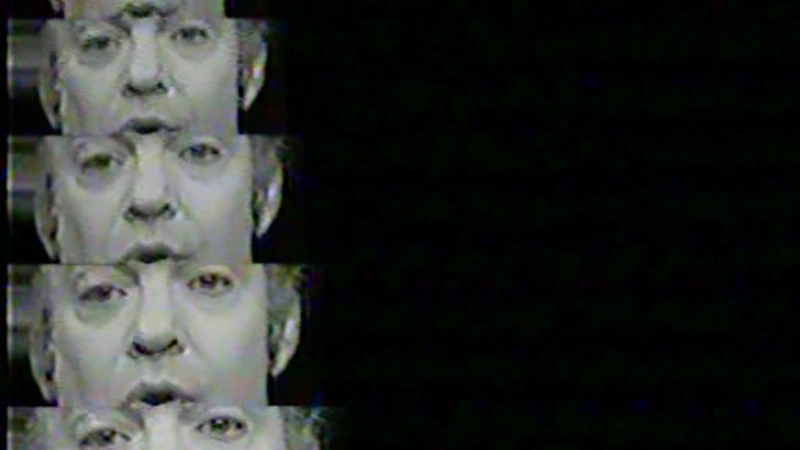
_______________
Initiation (1978)
‘Part of Shirley Clarke’s cycle FOUR JOURNEYS INTO MYSTIC TIME, this short film observes a dance that represents a spiritual or religious initiation.’ — The Criterion Channel
Excerpt
_______________
24 Frames per Second (1977)
‘A rapidly edited video study of ancient Persian tapestries.’ — Film Affinity
Excerpt
Excerpt
______________
Portrait of Jason (1967)
‘From today’s perspective, as the movie begins, Portrait of Jason seems less like a vacation from American reality than a rocket ship into the future of gay liberation. Dapper, blazered Jason Holliday—he’s on camera, drink(s) and cigarette(s) in hand, for the entire film—is unlike any gay man who had ever been seen in a movie before. He’s amusing, profane, explicit, and—most startlingly for the time—seemingly without shame, reservation, or embarrassment.’ — Film Comment
Trailer
Excerpt
________________
Robert Frost: A Lover’s Quarrel with the World (1963)
‘Shirley Clarke’s Academy Award–winning documentary profiles the renowned poet Robert Frost as he reflects on his life, career, and philosophy of the world. Interspersing intimate moments with Frost at his Vermont home with footage of him delivering lectures at Amherst and Sarah Lawrence Colleges, this contemplative portrait eloquently captures the humor, humanity, and complexity of a remarkable artist and thinker.’ — The Criterion Channel
the entire film
_______________
The Cool World (1963)
‘Based on the novel by Warren Miller about a teenager navigating the violent turf wars and internal hierarchies of Harlem gangs, and set to an unforgettable jazz score composed by Mal Waldron and performed by Dizzy Gillespie, Shirley Clarke’s The Cool World is a landmark of early American independent cinema. The film was produced by a young Frederick Wiseman, and it possesses something of a documentary quality as a result of its uptown location shooting, cast of local non-actors, and partially improvised performances. “Everything I’ve done,” Clarke declared late in her career, “is based on the duality of fantasy and reality,” and The Cool World, like so many of the works in this series, is constantly pivoting between the two.’ — filmlinc.org
Excerpt
Excerpt

________________
The Connection (1961)
‘Shirley Clarke made a splash—and ignited a landmark censorship case—with her controversial feature debut, an innovative adaptation of Jack Gelber’s off-Broadway play in which the line between documentary and narrative breaks down as a group of junkie jazz musicians crawl the walls while waiting for their next fix. With its restlessly kinetic camerawork, flavorful Beat dialogue, and cool jazz score by pianist Freddie Redd, THE CONNECTION is a groundbreaking depiction of drug addiction and one of the most vital and influential works of the American independent film movement.’ — Milestone Films
Trailer
_______________
A Scary Time (1960)
‘A Scary Time might well rank as one of the oddest pairings on record between a mainstream NGO and filmmaker. It’s a Shirley Clarke film through and through; anyone familiar with her body of work will recognize an unforced intimacy with her subjects, the musicality of her editing choices and camera movements, the overall improvisational feel masking design and intent.’ — Reverse Shot
the entire film
_______________
Skyscraper (1959)
‘Characterized by Shirley Clarke as “A musical comedy about the building of a skyscraper.”’ — MUBI
the entire film
_______________
Bridges-Go-Round (1958)
‘Bridges-Go-Round was crafted by Clarke from leftover project footage. In her hands, the monumental bridges spanning New York Harbor dissolve into flattened abstractions that seem to sway with the music. The dream-like quality is intensified by the vivid color, which was achieved by “bi-packing,” a process in which certain colors of the film original are altered by running the strip through the printer with a second piece of film. When rights issues threatened the use of the initial music track by Louis and Bebe Barron, who had composed the groundbreaking electronic score for Forbidden Planet (1956), Clarke asked jazz producer Teo Macero to develop a replacement. She liked them both and often screened the two versions back-to-back.’ — Film Preservation
the entire film
_______________
A Moment in Love (1956)
‘The recurring theme of dance once again works its way into a Shirley Clarke project, as this short film features a performance that takes place across a multitude of environments. As a primary couple intimately interacts, Clarke tests herself as a filmmaker by enhancing the performance with camera movements and visual additions. Altering the setting and the atmosphere with the use of back-projection, this intriguing piece illustrates Clarke’s willingness to experiment on many levels.’ — The Criterion Channel
Excerpt
_____________
Bullfight (1955)
‘Clarke, long fascinated with the art of dance, here documents a bravura performance by Anna Sokolow—a choreographed interpretation of the dance between matador and bull, intercut here with footage from inside an actual bullring.’ — Metrograph
the entire film
_____________
In Paris Parks (1954)
‘An early work by director Shirley Clarke, this short film displays the dynamic movement of people (including Wendy Clarke, the director’s daughter) as they enter and exit parks in Paris. Observing how crowds flow through an urban setting, the film also features Clarke’ eloquent editing, as the rhythmic cuts develop a tempo that compliments the footage.’ — The Criterion Channel
Excerpt
_____________
Dance in the Sun (1953)
‘A man dancing in a studio is inter-cut with the same dance in a setting on a beach and in the dunes.’ — IMDb
the entire film
*
p.s. Hey. ** Dominik, Hi!!! Cool, thank you on behalf of the poets mostly. I used to try not to use ‘haha’ but LOL is just too horrible to consider using (for me), and even though I like the idea that the words themselves should convey all the tonalities you put into them, there are those moments when the humor does need to be telegraphed a little. I hope if you played the GbV tune it added a little pizazz. How was your Xmas by the way? Anything worth ‘writing home’ about it? My Xmas did go as I thought it would, i.e, very casually with no big ups or downs, so thank you, love. Love keeping me from telling a friend of mine that I came across his boyfriend’s slave profile the other day, G. ** Misanthrope, I don’t know how to chill. I don’t think I’d chill even if I knew how to chill. Unless what I’m doing is chilling and I just don’t realise it. How old is that rapscallion David going to be this year? ** _Black_Acrylic, Thank you kindly, Ben. Okay, what in the world is going on in that karaoke scene? Heavy evil vibes, but then … ? ** tomk, Hi, Tom. Thanks, pal, and belated best ever day to you, or I guess may today be the bestest day. I didn’t write the best ever sentence as far as I remember, but I bet you did. Love, me. ** Sarah, Merry Xmas a day late to you, Sarah! Was it a goodie? I’m thinking that as soon as Carti’s album drops, the new date will pop up. And I hope his tour will take him close to you too. ** Charalampos, That bûche would have won the Nobel Bûche Prize. Happy New Year is next vibes from up here and me. ** Darby 🎅, Hi! Same to you! I did hang out with a similarly Xmas-orphaned friend and ate falafel, so it was alright. The main thing is you got gifts, deservedly. Oh, ‘The Marbled Swarm’ is my favorite of my books, so I’m happy it was The One. ‘TMS’ was the hardest one to write, and hard is good, so maybe that one’s hardness made it was most pleasurable? (If you’d asked me while I was writing it, I probably wouldn’t have said that). If my memory is correct, George’s university was a kind of hippie-ish type where you didn’t have to declare a major. He was a musician/composer. I say in the book he played guitar, but that was because there was a ‘guitar’ motif that needed to run through the book, but he didn’t actually play guitar, he played piano/ organ/ keyboards. I think he just used university as a thing to do as opposed to having a job and made music there, and probably studied music somewhat. I’ll go find a dancing Snoopy and pretend you uploaded it. Second best option. Enjoy your gifts, and enjoy Xmas fading away too. ** Right. I happened to watch the great Shirley Clarke’s ‘The Cool World’ recently, and, as is often the case, that nudged me into giving her and her work a post. I hope you enjoy it, naturally. And see you tomorrow.




 Now available in North America
Now available in North America 
Hi!!
I never use “LOL” either; actually, apart from “ASAP,” I don’t think I use any such abbreviations. They don’t necessarily annoy me, but I don’t like them. I find “haha” more bearable, although I agree that, ideally, the written sentence itself should be “translatable” on its own – tonality and all.
My Christmas largely went as it always does, and these rituals seem to be important to me, so I’m grateful to love, too – for not throwing it off track. I’m glad love didn’t slip in any undesired surprises on your end either! I think I’m most excited about Damien Ark’s “Come October,” which was one of my presents from my mom. I can’t wait to read it.
Ugh, what a shitty situation! Is his profile at least interesting enough? Love making sure that the leopard-print shirt I’ll be wearing for the first time today isn’t the kind that makes one sweat like crazy after 5 minutes, Od.
Hey Dennis, hope you had a good day off+ and that Santa Claus brought you some enticing things you wanted, physically or psychically.
Yeah I find Paris almost shockingly low intensity, in a simmering way, and I think the French people who say otherwise would never recover from a weekend in Cincinnati. Never been to the south or Brittany so I’m curious about them and I’ve never even heard of Morlaix before so I’ll put that on my radar. I have a soft spot for Rouen myself, which has some bizarre pop-up book streets and a jaw dropping, excessive gothic-ish cathedral. Also some cool used bookstores and Flaubert attractions, which move the needle for me.
I’m ultra slow with everything, writing or reading or editing or what have you, so I feel like heading down the wrong path can easily turn into a huge waste of time and energy. I don’t think it’s quite so dire with the story yet but I’ll need a bit of grace for it to take flight. It’s interesting, the friends who’ve had the most helpful things to say so far have been musicians & visual artists, people totally unconnected with fiction writing. Maybe it’s helpful to not have technical questions in mind that can lead to you psyching yourself out as a reader? I don’t know. Then again, I had multiple people tell me that one poem in my packet was the worst one of the bunch and then it was the only one that got accepted when I sent it around recently, so I guess you can never really know. Do you have a consistent first reader of your work or does it change depending on what the project is? Enjoy your day, I’m gonna go catch up on yesterday’s poetry scroll….
hi dennis! had to host christmas so i kinda dropped off the face of the earth for a couple days,
i’m back in the building now & sufficiently exhausted. cooking for like 10 people is hard work when you barely even cook for yourself. how was the buche? hoping it was capital g Grand. i was planning on disappearing upstairs after i finished cooking like some sort of cryptid but one of my aunts mentioned something about j-horror & it hit me right in the autism. was finally able to get myself a copy of the marbled swarm though! i put it on my wishlist ages ago but the price kept fluctuating & i just couldn’t be arsed.
oh right game development update!! through a very odd series of events i managed to crush my drawing tablet beneath the legs of my bed? i havent had the courage to check if it still works & i fear if it’s broken i will quite literally Shrivel Up And Die!!!! have gotten started on outlines of some of the really troublesome scenes but i can’t figure out how i’m gonna do the text formatting. oh, well.
okay anyway that’s enough of me Talking At You About Myself!! how’s your week(s? time is weird & i don’t quite grasp it) been? oh and also how’s zac? tell him this strange guy on your blog says hello if you so wish.
The Cool World looks really essential and is available on MUBI. Will try and access that but if not, will go for the platform featured here. Love me some righteous filmmaking!
Had some friends over today to watch the Leeds United game and eat some Bubble and Squeak made up of yesterday’s Xmas dinner leftovers. Sadly the football ended in a 2-1 defeat to Preston, but the food was still nice.
Re that Five Devils karaoke scene, the man and woman are brother and sister. He is not best pleased about her new relationship, and that is where the tension comes in.
Dennis, This is true. You are not a chill-er. I wish I was a little more like you, haha. Seems I’m always chilling.
David will be 23.
Christmas haul: three Amazon gift cards, a fitness tracker watch, a vacuum sealer for freezing food, a shirt for the gym, a Mandalorian-baby Yoda Funko Pop bobblehead, and a candle called “This Smells Like Timothee Chalamet.”
Neat thing about this watch is that it tracks your sleep. I guess I’m sleeping better than I thought I would.
You get anything for the holidays? Or is that something you and your friends there don’t do?
Good to hear you had a decent holiday, Dennis. I flew back in the morning, so it was a bit strange, but fine with me. Good to see all your seasonal offerings.
My big excitement was streaming this:
https://letterboxd.com/film/hippo/
Touches of Lanthimos, maybe Maddin, very enjoyable.
That last dance film has a rather odd soundtrack, kind of a collage of styles. I think I’ve seen the Connection, memory’s not what it used to be, haha.
Bill
Hi.
Dude trying to read what you said about marbled swan was straining to my eyes with the very odd articulation haha.
Very nice tho I have a lot of books im reading but can’t wait to get to it and let you know.
Ooh piano!!! Guitar is so overrated. I will fight people on that. I wholeheartedly wish that I grew up in one of those fancy ritch houses that had a grand piano in some decorated foyer. I only started learning when I was 14 and that was an offkey yard sale synth.
God organs are BEAUTIFUL I like organ grinders, do you like organ grinders?
A composer? That’s cool. What kind of stuff did they compose?
I like making music but’s electronic and I use a MIDI keyboard. I like making different things but I LOVE Alec Empire and German hardcore as well as the dark ambient stuff.
I like experimental.
Btw whenever you want the elephant I’ve got u!!
Oh also my birthday is on the 24th which is my 19th.
I think for all I want is to spend the day inside the membrane of Jeff Magnums Duodenum so that I could hear his stomach churn and watch the food enter. Drooling. 🤤